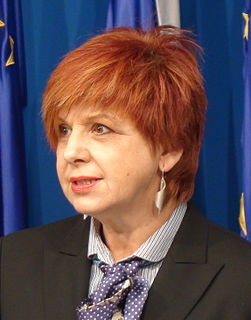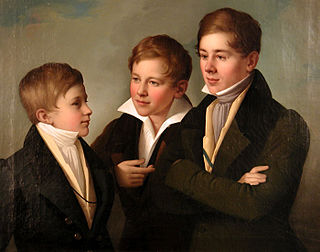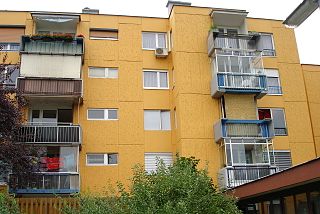
Nova Gorica is a town and a municipality in western Slovenia, on the border with Italy. Nova Gorica is a planned town, built according to the principles of modernist architecture after 1947, when the Paris Peace Treaty established a new border between Yugoslavia and Italy, leaving nearby Gorizia outside the borders of Yugoslavia and thus cutting off the Soča Valley, the Vipava Valley, the Gorizia Hills and the northwestern Karst Plateau from their traditional regional urban centre. Since 1948, Nova Gorica has replaced Gorizia as the principal urban centre of the Goriška or Gorizia region, as the northern part of the Slovenian Littoral has been traditionally called.

Prešeren Square is the central square in Ljubljana, the capital of Slovenia. It is part of the old town's pedestrian zone and a major meeting point, where festivals, Ljubljana carnival, concerts, sports, political, and protest events take place. It was renovated in 2007.
Vojteh Ravnikar was a Slovenian architect.

Žale Central Cemetery, often simply Žale, is the largest and the central cemetery in Ljubljana and Slovenia. It is located in the Bežigrad District and operated by the Žale Public Company.

The National Gallery of Slovenia is the national art gallery of Slovenia. It is located in the capital Ljubljana.

Edvard Ravnikar was a Slovenian architect.
Oris is a Croatian architecture magazine. The publisher describes it as a 'Magazine for Architecture and Culture'.

The Cankar Centre, also known as Cankarjev dom or Cankar Hall, is the largest Slovenian convention, congress and culture center. The building was designed by the architect Edvard Ravnikar and was built at the southern edge of Republic Square in Ljubljana between 1977 and 1982. Construction was funded entirely by the Socialist Republic of Slovenia.
Nova Gorica Grammar School is a coeducational nondenominational state secondary general education school for students aged between 15 and 19. It falls under the gymnasium type of schools, roughly equivalent to preparatory schools in Anglo-American contexts. Located in Nova Gorica, Slovenia, it is considered among the best secondary schools in Slovenia. Many notable personalities attended the schools, including two Prime Ministers of Slovenia, and the current President of Slovenia.

Majda Širca Ravnikar is a Slovenian art historian, journalist and politician. She is currently serving as Minister of Culture in the left-wing government of Borut Pahor.
Dijana Ravnikar is a former Slovenian biathlete and cross-country skier of Croatian origin.
The Museum of Modern Art in Ljubljana, Slovenia, is the central museum and gallery of the Slovenian art works from the 20th and 21st centuries.
Republic Square or Square of the Republic, at first named Revolution Square, is the largest square in Ljubljana, the capital of Slovenia. It was designed in the second half of the 20th century by Edvard Ravnikar. Independence of Slovenia was declared here on 26 June 1991. The National Assembly Building stands at its northern side, and Cankar Hall at the southern side.
Savin Sever was a Slovene architect. He was the son of a lawyer from the Littoral temporarily working in Krško, but he grew up in Maribor and Ljubljana.

Art of Slovenia refers to all forms of visual art in or associated with Slovenia, both before and after the country's Independence from Yugoslavia in 1991. Art in Slovenia has been shaped by a number of Slovenian painters, sculptors, architects, photographers, graphics artists, comics, illustration, and conceptual artists. The most prestigious institutions exhibiting works of Slovene visual artists are the National Gallery of Slovenia and the Museum of Modern Art in Ljubljana.
This page is based on this
Wikipedia article Text is available under the
CC BY-SA 4.0 license; additional terms may apply.
Images, videos and audio are available under their respective licenses.














